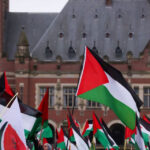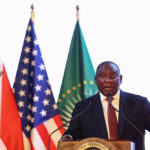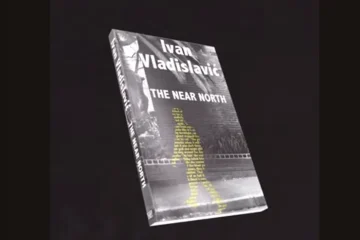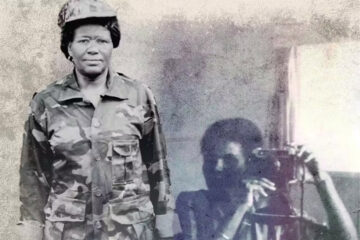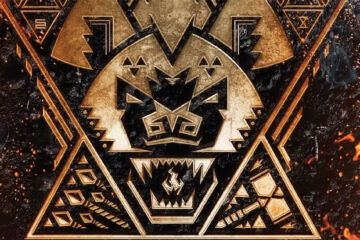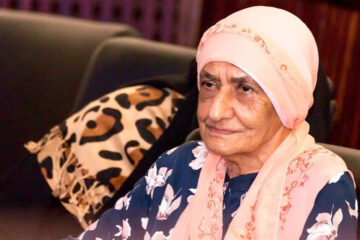IN a recently published book Steven Friedman, who has written extensively on the political and social aspects of apartheid and post-apartheid South Africa, explores the racist underpinnings of the west’s responses to Israel’s war in Gaza. This is an extract from the book, Good Jew, Bad Jew.

Ugandan academic Mahmood Mamdani sees a link between the violence of the coloniser and the slaughter of Jews and Slavs by the Nazis. The racial theories of Houston Stewart Chamberlain and others who claimed the Aryan race was superior meant that Jews and Slavs, who were both regarded as not Aryan, could be placed beyond the pale of civilisation and were thus candidates for the “laws of nature”, not of war.
According to Mamdani, in World War II, the Nazis “observed the laws of war against the Western powers but not against Russia”, and not against Jewish civilians and resistance fighters. British, American and French prisoners of war were treated according to the rules of the Third Geneva Convention, but Russians were not.
A bizarre feature of this distinction between the “civilised” and those ripe for the slaughter was that the Nazis’ Jewish prisoners of war serving in the Western armies were not slaughtered. But Russian soldiers were. This does not mean that Jewish and non-Jewish prisoners were treated entirely equally. Jewish prisoners were usually separated from others and there is some evidence that they were treated more harshly.
But the vast majority survived the war and there is no evidence that any were killed because they were Jewish. Scholars have made various attempts to explain this. But perhaps the most plausible explanation is one that none of them offers – that serving in a Western European or American army meant that Jews, in the eyes of their Nazi captors, had attained at least a sufficient degree of “Europeanness” to save them from death. Serving in the Russian military conferred no such “honorary Aryan” status because Soviet Russia was considered a mortal enemy of the Aryan race – a “non-Western” presence in Europe.
Nazi extermination camps, where gas chambers were used as instruments of slaughter, were all situated in occupied Poland, not in Germany. There were concentration camps in Germany, but these were forced labour camps, not death camps. An obvious explanation for this seemingly odd fact is that the Nazis worried that Germans might learn what was happening in death camps, and might not share their government’s view that wholesale slaughter was acceptable.
This was similar to the tactics of the architects of apartheid in South Africa. They ensured that brutality directed at black people was usually imposed in areas away from the gaze of white people. But it seems unlikely that this explanation would hold. Apartheid showed that human rights abuses do not need to be moved to another country to hide them from the sight of the dominant group.
Rather, it seems likely that the reason was that which Mamdani’s analysis suggests: by siting the camps to the east of Germany, the Nazis were, in effect, removing them from Western Europe where such barbarism was not considered acceptable. The east of Europe became, in a sense, a colony inhabited by people who were not considered Aryan and therefore not fully European. They were thus subject only to the “laws of nature”.
Anti-semitism, racism and genocide
Nazi anti-Jewish bigotry was originally labelled racism while bigotry against people who were not white Europeans was not. The context of the situation of the camps helps to explain that. Bigotry was acceptable only if it was directed at people who were not European. Mamdani cites A History of Bombing, by the Swedish author Sven Lindqvist. He observes that the Nazi genocide was
born at the meeting point of two traditions that marked modern Western civilization: ‘the anti-Semitic tradition and the tradition of genocide of colonised peoples’.
The first was (mainly) the prejudice of the right. The second produced the less obvious but still real prejudices which justified colonisation and continue to underpin mainstream European attitudes. Mamdani notes,
The fate of the Jewish people was that they were to be exterminated as a whole. In that, they were unique – but only in Europe.
This point, he adds, was not lost on intellectuals from colonised countries, such as the Martinican thinker Aimé Césaire, who wrote that the European bourgeoisie could not forgive Hitler for
the fact that he applied to Europe colonialist procedures which until then had been reserved exclusively for the Arabs of Algeria, the ‘coolies’ of India, and the ‘niggers’ of Africa.
This, of course, explains why a Europe that was justifiably appalled at the Nazi genocide had no great qualms about the wholesale slaughter of Congolese or about the Herero genocide.
It might be argued that the reason was not bigotry but distance. Events in Africa were simply not noticed in Europe because they happened far away, and few people were aware of them. But Mamdani’s view that race prejudice was at work is supported by the fact that these attitudes persist today, when communications technologies ensure that the Western mainstream knows what is wrought on people in far-off places. A clear example is the attitudes prompted by the Russian invasion of Ukraine.
As numerous critiques have shown, European politicians and journalists drew repeated attention to the fact that the Ukrainians were white Europeans or “people like us” – and therefore “civilised” – in contrast to Iraqis, Yemenis, Syrians, Afghanis, Africans and, until not that long ago, Jews.
While this could be dismissed as the view of a bigoted few, the fact that Europe and the United States acted with a level of anger never directed at the Israeli state’s bombing of Palestinians, Saudi bombing of Yemen or Russian bombing of Muslim Chechnya and Syria suggests that Mamdani’s hypothesis explains this reaction too. That the United States led the charge, despite its own incursions into Iraq, Afghanistan and other countries, could be explained as plain hypocrisy but could also fit in with Mamdani’s thesis. The Russians had broken the rules of “civilised war” by treating white European Ukrainians in a manner that should be reserved for colonised subjects. Had they restricted themselves, like the West, to visiting misery only on people who were not European, such as the Syrians whom they had earlier bombed, they would have acted well within “civilised” bounds.
Racial experiments
But it seems not always possible to restrict barbarism to the colonies. Mamdani shows how European behaviour in Namibia set the stage for the Nazi genocide in Europe. It was in Namibia in the first years of the 20th century that Eugen Fischer, a German geneticist, conducted “racial experiments” on Herero people who were, as Jews would later be, interned in concentration camps. Fischer claimed to have shown that people born of mixed Herero and German parentage were
physically and mentally inferior to their German parents.
Adolf Hitler read Fischer’s book that made this claim, and later appointed him rector of the university of Berlin. One of Fischer’s students was Josef Mengele, who conducted experiments in Auschwitz on Jewish human beings and who also selected victims for the gas chambers.
Nazism was, seen through this lens, what Franz Fanon suggested it was: a form of colonial rule extended into Europe. It took the “anti-Semitic tradition” to its logical conclusion by relegating Jews to the status of Africans whose slaughter Chamberlain celebrated in his letters to the German Kaiser hailing the murder of Hereros.
We can see current attempts to align Jews with white supremacy and ethnic nationalism as attempts to escape this history and to position “good”, Zionist, Jews as the white Europeans that Nazism insisted they were not. This gives added significance to the fact that the first American writings claiming a “new anti-Semitism” devoted much effort to blaming black people for anti-Semitism, thus signalling that Jews shared the prejudices of the white European mainstream and so should never have been treated as the Congolese and Hereros had been.
Zionism and violence against Palestinians
The current alliance between the Israeli state and other ethnic nationalists is a further example of the attempt to become European. Viewed in this way, today’s right-wing Zionism is not, as it is sometimes portrayed, a departure from the movement’s supposed humanist past. There is a direct line from Herzl, whose Zionism was inspired by the music of a virulent anti-Semite, to the Israeli state and its supporters who find sustenance in the prejudices of Donald Trump and Viktor Orban.
Much the same impulse surely drives British Jews who today unite with those who had once excluded them from their clubs and, more recently, stereotyped them in novels. These stereotypes are used to denounce left-wingers whom the right has always associated with Jewishness.
Mamdani uses the term “conscripts of Western power” to describe those who were once oppressed by the West but are now allied to it. But today’s “good Jews” are not conscripts; they are volunteers.
His argument also sheds new light on the visits of right-wing anti-Semites to the Yad Vashem memorial to Nazi victims, a practice aptly described by the Israeli journalist Noa Landau as “Shoah-washing”. The Israeli anti-Zionist activist Orly Noy notes:
If Zionism previously justified its crimes against the Palestinian people in the name of the Holocaust, today it uses the Holocaust as a tool to justify antisemitism itself in exchange for political profit. More than that: it allows an antisemite to define what antisemitism is. This is the bitter truth we face today – for the official State of Israel, the concept of the Holocaust and antisemitism are purely political means, and as such can be manipulated, distorted, and deceived, just like any other political tool.
Nazi crimes are used by the Israeli state to justify violence against Palestinians. But viewed through Mamdani’s distinction, and the core role that Nazi mass murder plays in Zionism’s justifications, the Israeli state’s use of the Nazi genocide may also be seen as a continuing attempt to remind ethnic nationalists that by forming an ethnic nationalist state, Jews should be treated as the Nazis would not treat them – as fellow Europeans, rather than as “darker people” who are deserving targets of racism.
Noy’s reference to allowing anti-Semites to define anti-Semitism may also shed light on why today’s anti-Semites are happy to accept the invitation to mourn a Nazi slaughter that they usually excuse. An obvious explanation is that their admiration for the Israeli state makes a little hypocrisy necessary.
If their favourite ethnic nationalist state wants heads of government who feel that the Nazi genocide has received an unfair bad press to shed a ritualised tear for its victims, that is a small price to pay. But they may also be signalling that the establishment of an ethnic nationalist state, which itself colonises the “darker races”, entitles “good Jews” to the European status that the Nazis had denied them. This, of course, does not mean that “bad Jews” – those who are not fervent ethnic nationalists – deserve the same consideration.
The distinction between European and colonial wars may also shed more light on why “good Jews”, those who support the Israeli state, are so firmly supported by Western centrists and liberals. If Jews are, as the opponents of Nazi racism insisted, European, then the Israeli state can be seen as another colonial enterprise, which, in the view of some of its opponents, is exactly what it is. And so its response to Palestinians is, in the eyes of its European allies, governed by the “laws of nature”, not by the “laws of war”. To brutalise Ukrainians is to violate the “laws of war” and is unacceptable to Europe and its heirs. To brutalise Palestinians is to follow the “laws of nature”. The Israeli state may do as it pleases to Palestinians without violating the code of those to whom “Europeanness” or “whiteness” is a valued identity – many of whom are liberals or centrists.
The distinction between European and colonial wars, then, throws important light on the new way in which Jews are viewed both by white supremacists and by mainstream Europe.
Good Jew, Bad Jew: Racism, anti-Semitism and the assault on meaning is published by Wits University Press.


